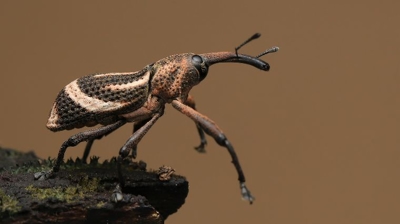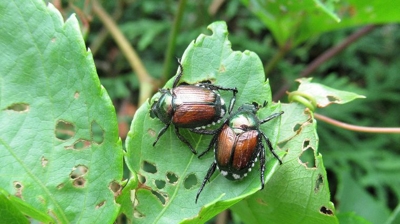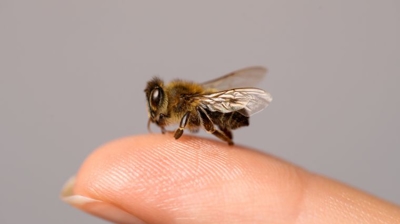
Skinks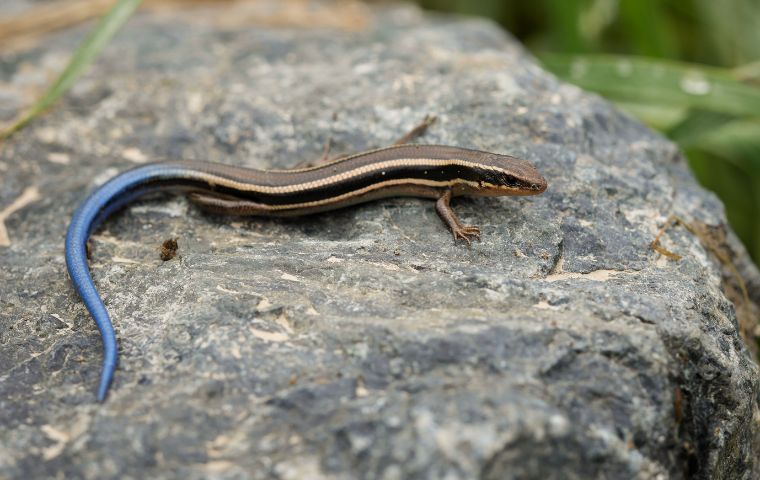
What Are Skinks?
Skinks are a diverse and fascinating group of reptiles belonging to the family Scincidae, which is part of the larger order Squamata, which also includes lizards and snakes. Skinks are characterized by their elongated bodies, relatively short legs, and smooth, overlapping scales. They can be found in a wide range of habitats worldwide, from tropical rainforests to deserts, and they come in various shapes, sizes, and colors.
One of the distinguishing features of skinks is their ability to shed their tails when threatened by predators, a phenomenon known as autotomy. The detached tail can continue to wriggle, distracting the predator while the skink makes its escape. Over time, skinks can regenerate their lost tails, although the new one is often shorter and may look different from the original.
Skinks are primarily insectivorous, but their diet can vary depending on the species and habitat. Some species are herbivorous, while others may eat small vertebrates or even carrion. Their feeding habits make them ecologically important as they help control insect populations.
Skinks also exhibit a wide range of reproductive strategies, with some species laying eggs, others giving birth to live young, and some combining both methods. They often exhibit complex courtship behaviors, and their reproductive habits vary greatly among species.
Are Skinks Harmful?
Skinks are generally harmless to humans, pets, and the environment. However, there are a few ways they might be considered problematic in certain situations:
- Biting (Rarely Harmful) – While skinks are not aggressive and do not pose a serious threat, they may bite if handled or threatened. Their bites are not venomous and typically do not cause significant harm beyond minor discomfort.
- Potential for Startling People – Because skinks move quickly and resemble snakes at first glance, they may startle individuals who are afraid of reptiles. This can be an issue in homes, gardens, or outdoor spaces.
- Invading Homes – Skinks can sometimes enter houses, garages, or sheds in search of food or shelter. While they do not cause structural damage, their presence may be unwelcome to some homeowners.
- Preying on Beneficial Insects – While skinks help control insect populations, they might also eat beneficial species such as pollinators (e.g., bees and butterflies), which could impact a garden’s ecosystem.
- Attracting Predators – In areas where skinks are abundant, they can attract predators like snakes, birds, and larger reptiles. This could be a concern for people who do not want to encourage certain wildlife near their homes.
- Possible Toxicity to Pets – Some species of skinks, particularly blue-tailed skinks, may be mildly toxic to cats and dogs if eaten. While not lethal, ingestion can sometimes cause gastrointestinal distress or neurological symptoms in pets.
- Digging in Gardens – Skinks occasionally burrow in soft soil, which may disturb plant roots or landscaped areas. However, their digging is usually minimal compared to rodents or other burrowing animals.
While these concerns exist, skinks are generally beneficial creatures that help control insect populations and play an important role in their ecosystems.
Learn more: Are Skinks Poisonous?
What Types Of Skinks Are There?
Skinks are a highly diverse group of reptiles, with over 1,500 recognized species belonging to the family Scincidae. These species are spread across various continents, and they exhibit a wide range of sizes, colors, and adaptations. Here are some of the notable types of skinks:
- Blue-Tongued Skinks (Tiliqua spp.): Blue-tongued skinks are well-known for their distinctive blue tongues and relatively large size compared to many other skink species. They are native to Australia and nearby regions and are popular as pets due to their docile nature.
- Five-Lined Skinks (Plestiodon fasciatus): Found in North America, five-lined skinks are easily identifiable by the five yellowish stripes running down their dark bodies. They are often encountered in wooded areas and gardens.
- Seychelles Skinks (Mabuya spp.): Endemic to the Seychelles archipelago in the Indian Ocean, these skinks are known for their adaptation to island environments. They vary in size and coloration, with some species exhibiting vibrant patterns.
- African Glass Lizards (Ophisaurus spp.): Although they are often called "glass lizards," these legless reptiles are a type of skink. They are found in Africa and have long, slender bodies with smooth scales.
- Fire Skinks (Lepidothyris fernandi): Native to West Africa, fire skinks are brilliantly colored with a mix of red, orange, and black scales. They are sought after in the pet trade for their striking appearance.
- Madagascar Skinks (Trachylepis spp.): These skinks are endemic to Madagascar and nearby regions. They come in various sizes and colors and are known for their adaptability to different habitats, from forests to urban areas.
- Snake-Eyed Skinks (Cryptoblepharus spp.): Found in various parts of the world, snake-eyed skinks are characterized by their small size and elongated bodies. They are agile climbers and are often seen on trees and walls.
- Rainforest Skinks (Eugongylus spp.): These skinks are primarily found in the rainforests of New Guinea and nearby islands. They are known for their vivid green coloration and arboreal habits.
- Desert Skinks (Eremiascincus spp.): As the name suggests, these skinks inhabit arid regions, particularly in Australia. They have adapted to survive in harsh desert environments.
- Skilton's Skink (Plestiodon skiltonianus): Native to North America, Skilton's skink is known for its ability to lose and regenerate its tail. It is commonly found in grasslands and shrubby areas.
These are just a few examples of the diverse range of skinks found worldwide. Each type of skink has evolved unique characteristics and adaptations suited to its specific habitat and ecological niche. Researchers continue to discover and classify new skink species, contributing to our understanding of this intriguing group of reptiles.
Skink Appearance
Skinks are a diverse group of reptiles, and their appearance can vary significantly among species. However, there are some general characteristics that are common to many skinks:
- Body Shape: Skinks typically have elongated bodies with cylindrical or slightly flattened shapes. Their bodies are covered in smooth, overlapping scales.
- Limbs: Most skinks have relatively short legs compared to their body length, and their limbs are positioned at the sides of their bodies. They are not known for their agility on land but are excellent swimmers and climbers.
- Tail: Skinks often have long tails that taper to a point. The tail can vary in length among species and may be longer than the body in some cases.
- Head: Skinks typically have distinct heads with a pointed snout and a mouth lined with small, sharp teeth. Their eyes are usually well-developed and positioned on the sides of their heads.
- Scales: The scales covering a skink's body can be quite variable in color and pattern. Some skinks have plain, uniform colors, while others may have intricate patterns, stripes, or spots. The scales can range from shiny and iridescent to matte in appearance.
- Size: Skink species vary in size, with some small species measuring just a few inches in total length, while others can grow up to a foot or more.
- Coloration: Skink coloration varies widely among species and can include shades of brown, gray, green, blue, red, orange, or even black, depending on the habitat and adaptations of the species. Some skinks may also change color for camouflage or during certain behavioral displays.
- Tongue: Skinks are known for their tongues, which can vary in color but are often pink or blue. Blue-tongued skinks, in particular, have tongues that are brightly colored and are used as a defense mechanism.
- Autotomy: Many skinks possess the ability to shed their tails when threatened by predators. The detached tail may wriggle to distract the predator, allowing the skink to escape. Over time, they can regenerate a new tail, though it may be shorter and different in appearance.
Skinks exhibit a wide range of diversity in their physical characteristics due to their adaptability to different environments and ecological niches. Consequently, the appearance of a skink can vary significantly depending on its species and habitat.
Skink Habitat
Skinks can be found in a wide range of habitats around the world, but their distribution depends on the specific species. Here are some common types of habitats and regions where you might encounter skinks:
- Tropical Rainforests: Many skink species are found in tropical rainforests, where they inhabit the forest floor, trees, and understory vegetation. These regions are often rich in biodiversity, making them ideal for skinks.
- Deserts: Some skink species are adapted to arid desert environments. They are often found in sandy or rocky areas where they can burrow to escape the heat.
- Temperate Forests: In temperate regions, skinks may be found in woodlands and forests, particularly in areas with plenty of ground cover and hiding places like fallen logs and leaf litter.
- Grasslands: Certain skink species thrive in grassy habitats, such as meadows and savannas. They are often ground-dwelling and well-camouflaged among the vegetation.
- Coastal Areas: Coastal skink species are adapted to living in sandy or rocky shores and dunes. Some are even known to be semi-aquatic and can be found along shorelines.
- Urban Areas: Skinks are surprisingly adaptable and can be found in urban and suburban environments, particularly in gardens, parks, and areas with vegetation. They may take shelter in and around human-made structures.
- Islands: Skinks are often found on islands, where they may have evolved unique adaptations due to isolation. For example, some island skink species are known for their small size and vibrant colors.
- Mangroves: In coastal regions with mangrove forests, you may find skink species that are adapted to these brackish-water habitats.
- Caves: Some skink species are adapted to living in caves or subterranean environments, where they are well-suited to dark, moist conditions.
- Mountains: In higher elevations, skinks may be found in mountainous regions. These species are often adapted to cooler temperatures and may have specific adaptations for climbing and surviving at higher altitudes.
The specific species and their distribution will vary depending on the region you are in. Additionally, skinks are often masters of camouflage, so spotting them can be challenging. Patience and a keen eye are valuable when searching for these intriguing reptiles in their natural habitats.
Skink Diet
Skinks are opportunistic feeders, and their diet can vary depending on the species, habitat, and availability of food. Generally, skinks are insectivorous, which means they primarily consume insects and other small invertebrates. However, some skink species exhibit dietary diversity, including herbivorous and omnivorous tendencies. Here's a breakdown of what skinks commonly eat:
- Insects: Many skink species are insectivorous and primarily feed on a variety of insects, including ants, beetles, grasshoppers, crickets, termites, and caterpillars. They are agile hunters and may use their keen eyesight to locate and capture prey.
- Arachnids: Skinks may also consume spiders and other arachnids when they come across them in their habitat. These small arthropods provide a good source of protein.
- Other Invertebrates: Some skinks may eat other small invertebrates, such as earthworms, centipedes, and millipedes. The specific prey items can depend on what is available in their environment.
- Plant Material: Certain skink species are herbivorous or have herbivorous tendencies. They may consume a diet consisting of leaves, flowers, fruits, and plant matter. Herbivorous skinks are often adapted to processing plant material in their digestive systems.
- Fungi and Detritus: In addition to insects and plants, some skinks may consume fungi, algae, and decaying plant matter (detritus) as part of their diet. This is more common in certain species found in moist environments.
- Small Vertebrates: In rare cases, some skinks may consume small vertebrates, such as other lizards, small mammals, or the eggs of other reptiles and birds. This behavior is less common and is more often seen in the larger skink species.
- Opportunistic Feeders: Skinks are opportunistic and will often eat whatever food is readily available in their environment. This adaptability can be advantageous, especially in changing or unpredictable conditions.
The specific diet of an individual skink can vary greatly depending on its size, habitat, and local food availability.
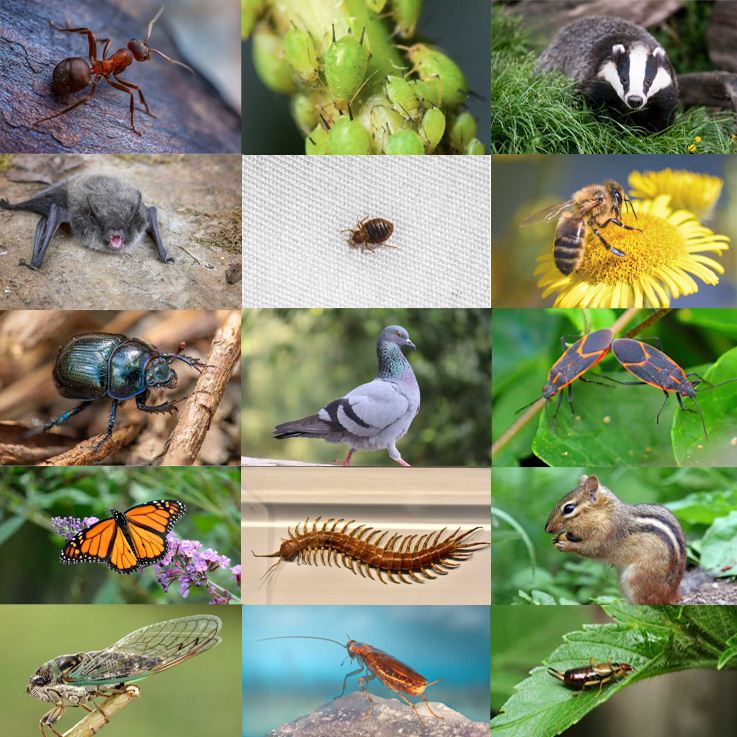
Skink Life Cycle
The life cycle of skinks, like many reptiles, typically includes several stages, including reproduction, development, and maturity. While there can be variations among different skink species, the following is a general overview of their life cycle:
- Reproduction: Skinks reproduce sexually, and most species have distinct courtship behaviors. Males often engage in displays to attract females, which may involve head bobbing, tail wagging, or vocalizations. Skinks exhibit a variety of reproductive strategies. Some species are oviparous, meaning they lay eggs, while others are viviparous, giving birth to live young. Some species can even exhibit both methods within a single population.
- Egg Stage (Oviparous Species): In oviparous species, female skinks lay eggs in suitable nesting sites. The choice of nesting sites varies and can include underground burrows, leaf litter, or other concealed locations. The eggs are typically left unattended by the mother and must rely on environmental conditions, such as temperature and humidity, for incubation. Incubation periods vary among species.
- Hatchling Stage: When the eggs hatch, young skinks, known as hatchlings or neonates, emerge from the nest. They are usually miniature versions of the adults. Hatchlings are often vulnerable to predation and environmental challenges, and their survival rates can be relatively low.
- Juvenile Stage: As hatchlings grow, they enter the juvenile stage. During this period, they continue to develop and acquire adult features. Juvenile skinks are typically more active in foraging for food and may require a different diet than adults, often focusing on smaller prey items.
- Adult Stage: Skinks reach sexual maturity at varying ages, depending on the species. Some may mature within a year, while others may take several years to reach adulthood. Adult skinks engage in the reproductive process, repeating the cycle by mating, laying eggs, or giving birth to live young.
- Lifespan: The lifespan of skinks can vary greatly among species. Some may live for only a few years, while others can live for several decades in captivity.
The specific details of the life cycle, including the timing of stages and reproductive strategies, can vary significantly among skink species. Additionally, environmental factors, such as temperature, humidity, and food availability, play crucial roles in influencing the life cycle and growth rates of skinks in different habitats.

Hear From Our Happy Customers
-
"Wonderful Service"
Wonderful service. Jarvis is great. Took care of everything I needed. Thank you!
- Henry P. -
"Fantastic & Patient"
Jarvis was fantastic and patient. He answered my questions with an in-depth explanation and addressed all of my areas of concern. Would love for him to be my assigned tech going forward. Well done!
- Yonnette M. -
"Professional & Considerate"
I’m pleased with Miche services. Jarvis came today. Professional and considerate. Thank you!
- Judy B. -
"Great Communication"
Tech was on time, communication was great, and he accommodated my needs.
- Alonzo W. -
"Exceeds Expectations"
I can’t say enough positive things about this company... The tech that came out, Jarvis went above and beyond my expectations. Thank you guys, I will continue using your services.
- Jake M. -
"Very Knowledgeable"
The tech that arrived was courteous, professional, and very knowledgeable. He was Great.
- Uerial I.

